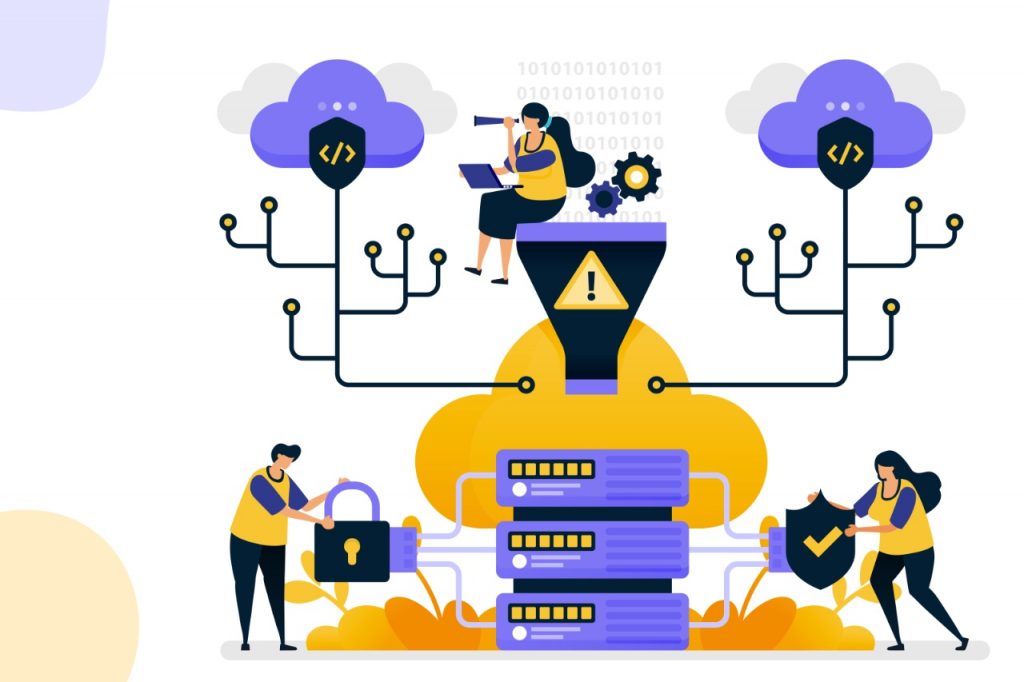Top 10 Cloud Security Challenges
Discussed below are 10 of the most common cloud computing security issues and challenges.
Data Breaches
Data breaches in on-premise storage have been evident for years. However, the exact level of cloud computing security is yet to be known. Some companies do not keep up-to-the-mark security measures to protect data on the cloud. It can lead to compromising situations and put sensitive data at stake. After a thorough evaluation of several companies, it was seen that data breaches are more likely in companies using cloud services than in those companies, who don’t.
Account Hijack
The instances of account hijacking are showing a rise with the increase in cloud services in many organizations. Attackers can use the login information now to get access to sensitive data stored in various cloud storage. Script bugs and reused passwords also help hackers to get hold of essential credentials easily. Apart from phishing, key-logging, and buffer overflow, attackers are now stealing user tokens to verify individual devices.
Insider Threats
Hacking from within the organization might seem to be an unlikely event, but its possibilities cannot be fully overlooked. Using authorized access to hack sensitive data and misusing them has been on the rise. This can all be done without any malicious intentions. Companies can control all these practices through different strategies, like a business partnership, prioritizing initiatives, access controlling, and technology implementation.
Injecting Malware
Malware injections can be defined as a series of codes embedded in cloud services to be viewed as a part of the software running within the clouds. After the malware attack, it becomes easier for hackers to easily compromise the integrity of the services and hack sensitive information. It is one of the major concerns in the world of cloud computing services at present. Here’s our guide on preventing malware.
Abuse
No matter the size of your business, hosting vast amounts of data is no more an issue, thanks to the expansion of cloud-based services. This huge storage capacity has allowed hackers to spread malware and illegal software that might be harsh for data integrity. It can affect both the cloud service provider and the organization taking up its services. Organizations can reduce the risk exposure by monitoring the activities of their employees online. They can also set usage guidelines for added safety.
Unsecured Application Programming Interface (APIs)
APIs are responsible for the cloud experience customization of the users. But the nature of the API can make it a threat to cloud services. Through APIs, organizations can customize their cloud service features according to their business requirements. It also helps with authentication, encryption, and providing access. It is important to know that, with API updates, as its infrastructure grows, there is a security risk as well. APIs indeed help integrate the application with the other software, but it also leaves the stances for exploitable security risks.
Denial of Service (DoS) Attacks
While other attacks are made to steal sensitive information, denial of service attacks make your website/servers unavailable to legitimate users. It can also be used as a smokescreen to perform various malicious activities and take down all the security measures such as firewalls.
Due Diligence Insufficiency
If the concerned agency lacks a clear goal, resource, or policy planning, that too can impose security challenges on the cloud service. If the organization migrates to the cloud from on-premise storage without proper planning, it can affect the level of the company’s customer satisfaction.
Shared Vulnerabilities
It is important to note that both the client and provider are responsible for cloud security. Thus, the clients must take protective measures to secure their data. Companies can provide some standard security procedures; however, the clients have control over it. For example, organizations can provide measures like two-step authentication, but it is up to the clients to keep their password safe and not share it with anyone else.
Data Loss
Malicious attacks can lead to data loss on cloud services. The reasons also include data wipe, natural disasters, etc. Data loss can be havoc on companies that do not have a backup or recovery system. Thus, it is essential to review the provider’s backup strategies for the safety of one’s data as a user. You must have a perfect disaster recovery plan. Learn how to audit your digital security.
Final words
Cloud storage has indeed opened up a whole new frontier in terms of accessibility, flexibility, and doing business. It also improves the productivity of the company as a whole. The positive side here is that each challenge comes with specific solutions; so, it is useful to identify them in the first place.
